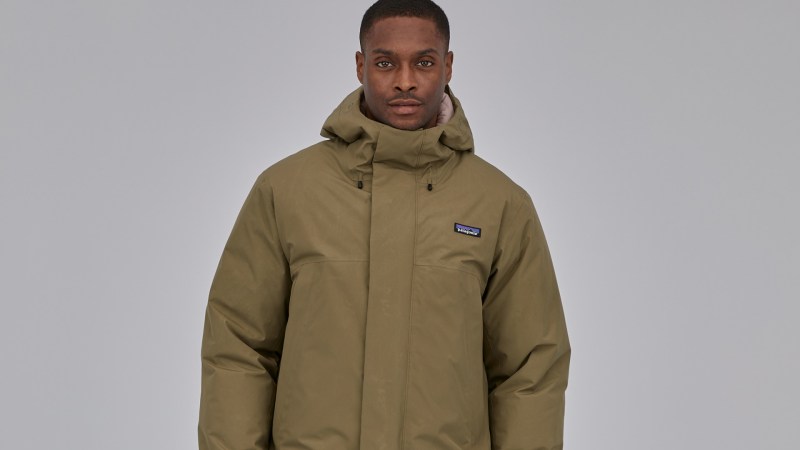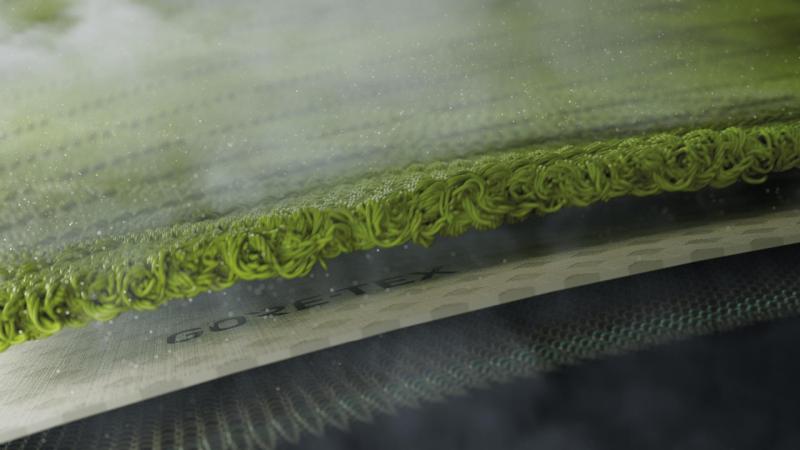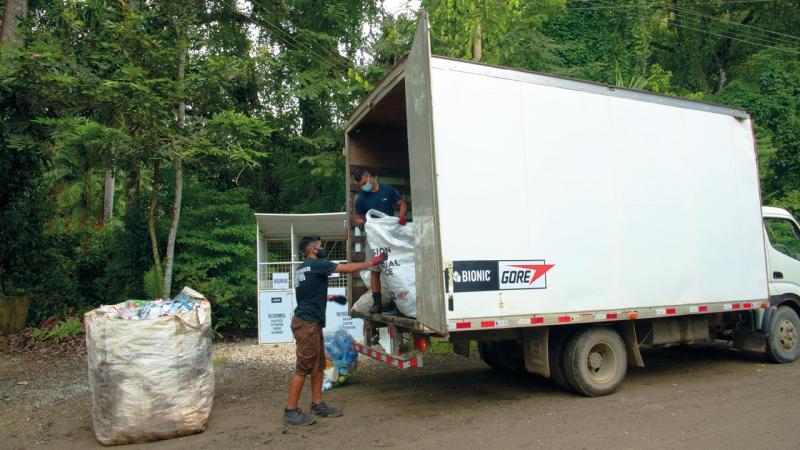
Since it hit the market in the ’70s, GORE-TEX has been the industry-leading waterproof membrane, and as industry standards in eco-tech advance, it has shown a renewed commitment to staying at the front of the pack. Along with the new ePe membrane made without PFC chemicals, GORE-TEX has begun making laminate layers from 100% recycled plastics, and this newest advancement is being debuted in the latest Patagonia jacket.
The Patagonia Stormshadow Parka is one of the warmest jackets in the Patagonia line, featuring 700-fill down — 100% reclaimed from down products — beneath the fully GORE-TEX membrane and PFC-free DWR finish. It’s not surprising that Patagonia was an early adopter and collaborator on technological advancements in ensuring that you not only get a great quality jacket but that it doesn’t cost the earth. Here’s how the newest eco-tech advancements from GORE-TEX and Patagonia keep you dry.

GORE-TEX ePE membrane
GORE-TEX products first featured the new ePe membrane in 2022, but you’d be forgiven for missing it. While a notable host of companies adopted the latest technology, the list of GORE-TEX jackets, gloves, hiking boots, and other garments to feature the ePE membrane wasn’t extensive. As the rollout continues — with products like the Stormshadow Parka bringing the technology to everyday jackets — we expect to see increasing numbers of products featuring the ePE membrane.
This membrane is part of GORE-TEX’s continued efforts to become PFC-free. Previously, both the DWR coating and the GORE-TEX membrane contained PFC chemicals of environmental concern. These forever chemicals have been at the forefront of outdoor eco-tech discussions. PFC chemicals do not break down and impact the environment when they wash off or rub off the jacket. The effects of long-term exposure of hikers, campers, and outdoor retail employees to these chemicals and the potential health issues are equally of concern. Outdoor manufacturers — GORE-TEX included — have been looking to reduce the use of these chemicals in a way that doesn’t detrimentally affect the quality of their gear, and ePe appears to be GORE-TEX’s breakthrough.

GORE-TEX Recycled BIONIC Textiles
Along with all this, GORE-TEX has made the environmental move to make its polyester face fabrics from 100% recycled plastics. To achieve this, it has joined forces with BIONIC, a grassroots program in Costa Rica focusing on local waste management and repurposing plastic waste. GORE-TEX has provided investment and material science to this program, but they’ve gone further and now use the collected plastic as part of their laminating process.
The 100% recycled textile — debuted on the Patagonia Stormshadow Jacket — comprises 50% plastics collected through the BIONIC initiatives in coastal communities and 50% recycled from municipal collections. When bonded to the ePe membrane, you get the same quality waterproofing you expect from a GORE-TEX jacket, but with the knowledge that you’re part of the outdoor eco-tech revolution led by companies like Patagonia and GORE-TEX to maintain the outdoor spaces we’re so passionate about exploring.
Editors' Recommendations
- This easy trick tells you which merino wool base layer is right for your activity
- The North Face is now making GORE-TEX denim because why not
- New Garmin tactix 7 AMOLED Edition may be the perfect smartwatch for deep-country camping and hiking
- Time to wake up: Climate change gave us our hottest summer ever and the Earth is in meltdown, U.N. says
- You can mountain bike into Death Valley and watch the next solar eclipse on October 14




